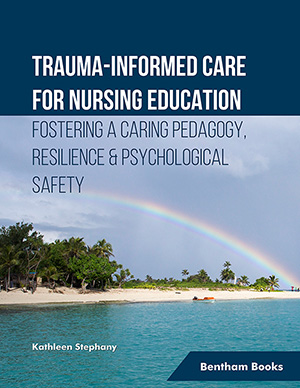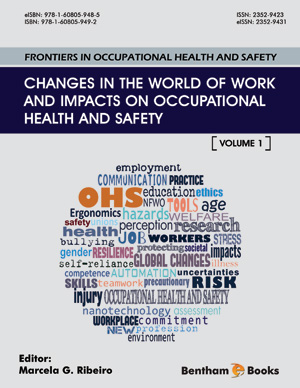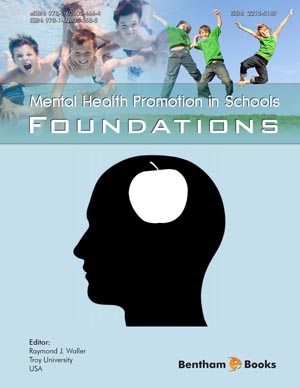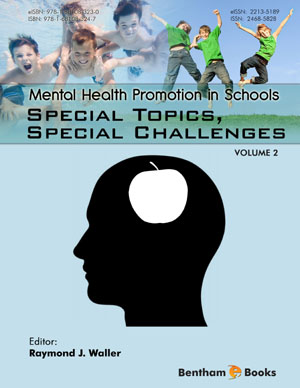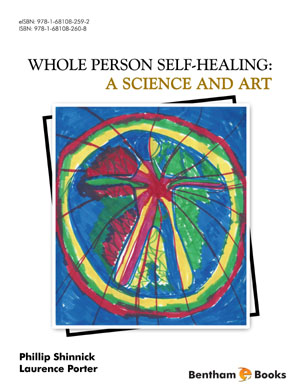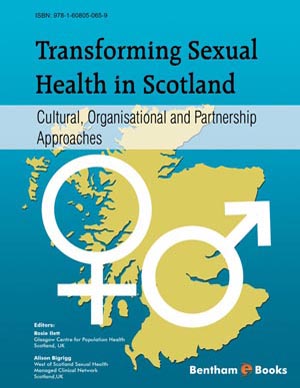The Prevalence and Impact of Trauma and Why Trauma-informed Care is Needed in Nursing Education
Page: 1-48 (48)
Author: Kathleen Stephany*
DOI: 10.2174/9789815223767124010005
PDF Price: $15
Abstract
Chapter one explores the reasons why student nurses need to be educated in
trauma-informed care. Trauma-informed care endeavours to help people who have
experienced trauma and targets change at the organizational and clinical level with the
aim of improving client/patient outcomes. Various forms of adversity that exist are
presented, and we are informed that trauma is not merely a childhood occurrence but
may occur at any point across the lifespan. Stereotypical biases and racial stigma
experienced by the following special populations are explored, those with differing
sexual orientation or gender identity, older adults, refugees and immigrants, people of
colour, and Indigenous people. The role that bias and implicit bias play in structural
trauma aimed at specific populations is explained. An overview is given of the
following specific trauma-related responses, trauma triggers, acute stress disorder,
post-traumatic stress disorder, secondary traumatic stress, vicarious traumatization, and
compassion fatigue. The Four Core Assumptions of Trauma-informed Care as
recommended by the Substance Abuse and Mental Health Services Administration
(SAMHSA are explored, because they are foundational for providing traumaresponsive care, and consist of realizing, recognizing, responding, and resisting retraumatization. Healthcare professionals are strongly encouraged to practice in a
trauma-responsive and trauma-sensitive manner. Incorporating trauma-informed
approaches into the Nursing School curriculum is recommended for the following
reasons. Adversity is prevalent in society, and high number of people who access
health services have experienced trauma. Student nurses are not currently learning
these skills in a comprehensive way in all schools. Student nurses may have a history
of trauma, and they are exposed to adverse and stressful events in clinical training. Two
Narrative Case Studies are presented. The first shares the story of a Counsellor who
developed compassion fatigue, and the second one reveals the complexity of the trigger
response. The following learning activities are suggested: connecting with the goodness
in life; changing prejudices and stigma; and participating in a trauma-sensitive practice
challenge. A self-care strategy that promotes self-compassion is included at the end of
the chapter.
The Six Guiding Principles of Trauma-Informed Care
Page: 49-85 (37)
Author: Kathleen Stephany*
DOI: 10.2174/9789815223767124010006
PDF Price: $15
Abstract
A principle-based approach to trauma-informed care is effective in
promoting healing and chapter two explores the crucial aspects of each of The Six
Guiding Principles of Trauma Informed Care as recommended by the Substance Abuse
and Mental Health Services Administration (SAMHSA). They consist of safety;
trustworthiness and transparency; peer support; collaboration and mutuality;
empowerment, voice, and choice; and cultural, historical, and gender issues. The
discussion begins by describing the physical, social, and psychological aspects of
safety. They include the location of the health facility, the atmosphere of the healthcare
clinic, staff attitudes, ensuring that health professionals are kept emotionally safe, and
avoiding re-traumatization. It is pointed out that people who have been intentionally
harmed by others do not easily trust. Therefore, trust must be earned through
compassionate connection, and by protecting a person’s privacy. Transparency is
highly recommended and occurs when a person is fully informed about all aspects of
the plan of care. Peer support is the help received from others who have lived through
similar experiences and facilitates healing. Collaboration and mutuality are suggested
to create a shared environment where there is an assumption that everyone, including
the client/patient, will be involved in decision-making. Empowerment, voice, and
choice when consistently applied foster an environment that utilizes a person’s
strengths to help them overcome adversity, gives them an opportunity to be listened to,
and to make their own choices. The power of empathy and other-focused listening, and
the importance of addressing cultural, historical, and gender issues are emphasized.
Poor health outcomes experienced by people of the LGBTQ2S community are highly
correlated with stigma. Nurses are identified as harbouring prejudicial attitudes toward
members of this population, and educational efforts are strongly suggested to change
these behaviours. Cultural humility is recommended as an effective way to counteract
racism and power difficulties through empowerment, excellence in care, and an
atmosphere of mutual respect. Self-awareness and self-reflection are recommended to
incorporate cultural humility into practice. Two Narrative Case Studies are reviewed.
The first one emphasizes the importance of safely conducting a client assessment, and
the second one explores how peer support helps a bereaved child. Participation in these
four learning activities is advised, strategies that enhance the environmental safety of a
healthcare facility; when breaching confidentiality is necessary; situations that promote
or impede trust; and actively communicating other-focused listening. The Chapter ends
with a self-care strategy that encourages nurses to participate in mindfulness techniques
to enhance the overall well-being.
Client-Centered, Person-Centered, and Resilience-Based Approaches to Trauma-Informed Care
Page: 86-129 (44)
Author: Kathleen Stephany*
DOI: 10.2174/9789815223767124010007
PDF Price: $15
Abstract
Chapter three explores client-centered, person-centered, and resiliencefocussed approaches to trauma-informed care, and although they differ somewhat, all
three are strength-based and share the common goal of helping people who have
experienced adversity. Client-centered care places the person and their capacity for
growth and change at the heart of all that occurs. This approach prioritizes respect for
the self-worth of every human being and promotes the practice of unconditional
positive regard. The quality of the therapeutic relationship between the nurse and
client/patient is important, as is the nurse’s ability to apply professional knowledge and
competence to the care they provide. A unique aspect of person-centered care is that it
provides services to people with acute and chronic health issues that are holistic, and
recovery-orientated. Collaboration and effective communication skills are essential
features of this approach. Positive ways to offer person-centered care to people from
these populations are reviewed, the elderly, those with a disability, people with
dementia, palliative care patients, and persons suffering from mental illness and
substance use. Specific components of recovery-oriented care that are included in the
discussion are a person’s capacity for change and courage, their responsibility for their
growth, and the importance of finding purpose in their lives. Resilience is identified as
the is the ability to carry on and bounce back to original functioning after experiencing
a trauma. We are made aware that a resilient person becomes stronger despite adversity
because they utilize positive emotions, develop a sturdy mindset, a renewed
commitment to life, and welcome challenges. The remainder of the discussion focuses
on how to safely conduct screening for trauma for everyone including survivors of
interpersonal violence (IPV). Two Narrative Case Studies are presented. The first one
demonstrates that when a client/patient crosses a professional boundary, a problem is
created for the nurse. The second Case Study explores how a survivor of interpersonal
violence (IPV) may require advocacy to help them stay safe. The following four
learning activities are recommended, how to practice unconditional positive regard;
exploring helpful strategies to utilize when conducting trauma screening; dispelling
myths associated with IPV; and how to implement survivor-centered approaches when
caring for someone who has experienced IPV. At the end of the Chapter, a self-care
strategy is recommended that challenges nurses to set aside time to focus more on
being present.
Trauma Recovery from a Positive Psychology and Post-Traumatic Growth Perspective
Page: 130-176 (47)
Author: Kathleen Stephany*
DOI: 10.2174/9789815223767124010008
PDF Price: $15
Abstract
The aim of Chapter Four is to demonstrate that living a better life after
adversity is possible when adequate support is offered. Therefore, positive psychology
and post-traumatic growth are two recovery-focused trauma-informed approaches that
are highly recommended to help people who have experienced adversity. Positive
psychology studies human well-being and optimal functioning. Post-traumatic growth
refers to positive changes in someone’s coping that occur from sorting through their
experience of trauma. Three different responses to traumatic stress are explained. For
instance, certain people bounce right back after an adverse event, others develop
maladaptive functioning, and a third reaction results in post-traumatic growth. The
particular response that a person experiences is somewhat context-dependent. After
trauma occurs, positive changes in brain function are made possible through
neuroplasticity. Positive Psychology and trauma-informed care share the common goal
of helping people to live better lives, but they also differ. For instance, positive
psychology strategies are designed to be used by everyone and are therefore not limited
to those who have experienced trauma. The five key elements of well-being theory
called PERMA are presented, such as positive emotions, engagement, relationships,
meaning, and accomplishment. Positive emotions are deemed essential for life
satisfaction. Work-related well-being was later developed and called PERMA+4 and is
associated with physical health, mindset, work environment, and economic security.
Flourishing is a central component of well-being theory and consists of the capacity to
be satisfied with one’s life achievements and being involved in something that is
meaningful. The following strategies are known to facilitate well-being, being grateful,
a positive attitude, random acts of kindness, and positive psychotherapy. Positive
psychotherapy is an effective method to treat trauma because it focuses on a person’s
strengths and weaknesses but also uses a person’s character signature strengths to help
them move forward. Appreciation for life, new possibilities, relating to others, personal
strength, and spiritual change are the five domains of post-traumatic growth. Meaningmaking, instillation of hope, and self-compassion are identified as additional lifeenhancing responses to adversity. Two Narrative Case Studies are presented. The first
one identifies how a student nurse felt unprepared to discuss spiritual issues with her
patient. The second case study demonstrates how nurturing mindful self-compassion
helps a teen to heal from childhood trauma. The following three learning activities are
suggested, debating the value of positive emotions, understanding the 24 signature
strengths of positive psychotherapy, and lessons learned from those who have
experienced post-traumatic growth. The chapter ends by recommending specific
gratitude-enhancing self-care strategies.
Mitigate the Negative Effects of Secondary Traumatic Stress and Compassion Fatigue by Cultivating a Caring Pedagogy and Resilience
Page: 177-220 (44)
Author: Kathleen Stephany*
DOI: 10.2174/9789815223767124010009
PDF Price: $15
Abstract
Students and practicing nurses are at risk of developing empathy-based
stress conditions related to caring for people who have been traumatized. Caring is a
known factor in all suggested interventions for empathy-based stress conditions.
Therefore, Chapter Five explores ways to mitigate the negative effects of secondary
traumatic stress and compassion fatigue through employing a caring pedagogy and
resilience. Caring pedagogy in nursing education is important because it incorporates
caring components into the delivery of the core curriculum, creates a community of
learning that prioritizes students, is inclusive, and engaging, and protects the emotional
integrity of student nurses. Noddings’ elements of moral education such as modeling,
dialogue, practice, and confirmation are identified as essential to a caring learning
environment. For example, student nurses can learn what it means to care by observing
the behavior of their instructor, by a dynamic exchange of ideas, by prioritizing caring,
and by encouraging the best in others. A learning environment that is caring must also
be based on civility and is the shared responsibility of both faculty and students. Selfcare is identified as a known strategy to reduce the emotional stress experienced by
nurses and student nurses. Watson’s Caritas processes are subsequently recommended
as the basis for self-care and consist of demonstrating sensitivity toward oneself and
everyone else, through spiritual practices that support loving, caring relationships.
Resilience consists of the ability to quickly return to normal functioning after
experiencing adversity. Resilience skills can be learned through the development of
protective factors and mechanisms and may prevent empathy-based stress conditions
related to trauma, can assist a trauma survivor to bounce back more quickly, and teach
people how to deal with the stress of everyday life. The following ways to cultivate
resilience in nurses are presented, building positive nurturing relationships and
networks; maintaining positivity; developing emotional insight; achieving life balance
and spirituality; and becoming more reflective. Three strategies to foster resilience in
nursing education include resilience training in the school curriculum; prioritizing role
modelling; and enabling generativity. Two Narrative Case Studies are presented. The
first one tells the story of how a Psychiatric Nurse developed the signs of secondary
traumatic stress after one of her clients ended their life through suicide. The second one
describes how a student nurse was unaware that she was experiencing emotional strain.
The following four learning activities are proposed, sharing examples of being cared
for; exploring ways to enhance learning; nurturing caring experiences in educational
settings; and implementing Watson’s caring processes and strategies to enhance selfcare. The Chapter ends by recommending a self-care challenge that promotes
emotional appraisal to manage negative emotions.
Augment Nursing School and Workplace Experience by Promoting Psychological Safety, Compassion Satisfaction and Joy in Work
Page: 221-258 (38)
Author: Kathleen Stephany*
DOI: 10.2174/9789815223767124010010
PDF Price: $15
Abstract
Chapter Six presents an overview of how trauma-informed educational
processes ensure that student nurses feel safe and supported in an ideal learning
environment. Strategies that promote psychological safety are recommended followed
by measures to foster compassion satisfaction and joy in work. Psychological safety
consists of a civil and respectful place for learning to occur. Compassion satisfaction is
derived from the gratification experienced by caregivers when caring for others, and
joy in work consists of positive components in the work environment. Nursing students
are a risk group for trauma, and they identify the following situations as sources of
trauma, individual-related interpersonal experiences; those related to their role as
students; trauma related to institutional and organizational exposure; and stressors
associated with the community. <i>The Four Core Assumptions of Trauma-informed Care</i> are used as a guide to implementing psychological safety in nursing school and include
specific measures for the classroom, simulation, and clinical settings. Those directly
related to high-fidelity simulation include actions to make students feel safe before,
during, and after each session. The positive feelings and six core assumptions
associated with compassion satisfaction, and the role that self-compassion and worklife balance play are featured. Key aspects of the work environment that have the
greatest impact on the well-being of nurses working in critical care consist of adequate
staffing, meaningful recognition, and effective decision-making. Student nurses with a
history of trauma can experience compassion satisfaction if they are able to identify
with some of the positive aspects associated with being a trauma survivor. If new
nurses are adequately supported by their employers they experience less stress, and
increased fulfillment in their jobs. There are valuable justifications for creating joy in
work. A focus on joy enhances the work experience, increases employee engagement,
benefits the organization, and improves patient outcomes. Making the workplace happy
is a shared responsibility, where everyone is expected to do their best work.
Meaningful connection to other people is important where teamwork, cooperation, and
a sense of camaraderie are ideal. Two specific forms of governance that promote joy in
work are participatory and servant leadership. Psychological personal protective
equipment (PPE) consists of individual and system-wide measures that support and
safeguard the mental health of employees. Two Narrative Case Studies were presented.
In the first one, a student nurse became re-traumatized when listening to a detailed
story of someone’s traumatic experience. The second Narrative Case Study revealed
how a new nurse considered leaving his high-acuity job because of a lack of
appreciation. The following five learning activities were proposed, exploring assumptions about constructive feedback; ways to professionally express appreciation;
understanding how you handle mistakes; creating a self-inventory to assess work-life
balance; and incorporating the ten characteristics of servant leadership into practice. At
the end of the Chapter, specific strategies were recommended to build college students’
self-confidence.
Introduction
Trauma-informed care is designed to assist persons who have experienced adversity and focuses on change at the clinical and organizational level. Its goals center around prevention, intervention, and treatments that are evidence-based, encourage resilience, and enhance coping. This textbook is designed to give a comprehensive overview of trauma-informed care to students and faculty involved in nursing care programs. Key features: · Explains the skill sets to assess and care for persons who have experienced trauma. · Emphasizes key principles of trauma-informed care · Includes the use of client-centered, person-centered, and resilience-based tools to deal with trauma · Recommends trauma recovery from a positive psychology and post-traumatic growth perspective · Utilizes a caring pedagogy intended to foster resilience and help offset the secondary traumatic stress and compassion fatigue experienced by student and practicing nurses. · Communicates the value of fostering psychological safety, compassion satisfaction, and joy in work · Includes narrative case studies and learning activities in all chapters to help the reader to actively engage with the subject matter. · Presents self-care strategies to enhance physical and emotional well-being.


